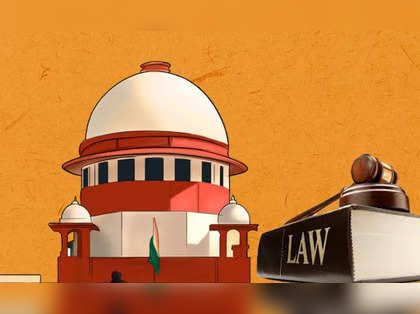Author : Priyanka Pawar, a student at Government Law College.
Introduction
Discrimination is a critical issue that affects our society deeply. This unjust treatment of individuals based on characteristics like race, gender, or religion undermines equality and human dignity.
The Griggs v. Duke Power Co. case is a landmark U.S. Supreme Court case from 1971. It dealt with employment discrimination and the use of aptitude tests by Duke Power Company. The Court ruled that the company’s requirement of a high school diploma and two aptitude tests disproportionately excluded African American employees, leading to a violation of Title VII of the Civil Rights Act of 1964. This case established the concept of “disparate impact” discrimination, which plays a crucial role in evaluating the fairness of employment practices under Title VII of the Civil Rights Act of 1964. “Disparate impact” discrimination means that employment practices could be discriminatory if they had a disproportionate impact on protected groups, even if there was no overt intent to discriminate.
Background
Duke Power Company
Duke Power company, headquartered in North Carolina, operated several power plants, including the Dan River plant, which was at the center of this case. Prior to the Civil Rights Act of 1964, Duke Power company openly discriminated against African American workers, only allowing them to take the lowest-paying, most physically demanding jobs with no chances for promotion. This discrimination was evident in their employment practices, specifically at the Dan River plant. Like Segregated Departments, African American employees were confined to the Labor Department, the lowest-paying division within the company. There were job Restrictions, Jobs in the Labor Department were physically demanding, hazardous, and offered minimal opportunity for advancement, wages in the Labor Department were significantly lower than in other departments where white employees worked, lack of Promotion, African American employees had little to no chance of being promoted to higher-paying jobs outside the Labor Department. These practices were clearly discriminatory and intended to limit the economic advancement of African American employees.
Discriminatory Practices
After the passage of the Civil Rights Act, which prohibited employment discrimination based on race, color, religion, sex, or national origin, Duke Power revised its policies. The company instituted a requirement for a high school diploma and the successful completion of two aptitude tests (the Wonderlic Cognitive Ability Test and the Bennett Mechanical Comprehension Test) for any position beyond the labor department. This requirement was entirely applied to all employees regardless of race.
Willie Griggs and a group of other twelve African American employees who brought a lawsuit against the Duke Power Company. Willie Griggs was the lead plaintiff in the case. Their legal action challenged the company’s employment practices, specifically the high school diploma requirement and standardized aptitude tests, which disproportionately affected African American employees. The case is named after Griggs because he was the primary plaintiff, and his name became synonymous with this landmark legal challenge against employment discrimination.
The Verdicts
The case was first heard in the United States District Court for the Middle District of North Carolina. The District Court ruled in favor of Duke Power, finding that there was no evidence of discriminatory intent behind the high school diploma and aptitude test requirements. The court held that the company had the right to set employment qualifications that it deemed necessary.
The plaintiffs appealed the decision to the United States Court of Appeals for the Fourth Circuit. The appellate court affirmed the District Court’s ruling, maintaining that the absence of discriminatory intent was sufficient to uphold Duke Power’s employment practices.
The plaintiffs then took their case to the Supreme Court, which agreed to review whether job practices that seem fair but unfairly impact a specific racial group violate Title VII of the Civil Rights Act.
During the case the plaintiffs argued that Duke Power’s diploma and testing requirements were not related to job performance and had a disparate impact on African American employees. They contended that these requirements served as a barrier to employment and advancement for African Americans, effectively continuing the company’s prior discriminatory practices.
On the other hand the Duke Power argued that the high school diploma and aptitude tests were implemented to improve the overall quality of the workforce and were applied equally to all employees. The company maintained that there was no intent to discriminate and that the requirements were legitimate, non-discriminatory employment practices.
The Supreme Court Verdict
The Supreme Court, in an 8-0 decision written by Chief Justice Warren E. Burger,overturned the lower courts’ rulings. The Court held that Title VII of the Civil Rights Act of 1964 aims to eliminate not only obvious discrimination but also practices that are fair in form but discriminatory in operation.
We can say that the Court recognized that employment practices could be discriminatory if they had a disparate impact on a protected group, even if there was no discriminatory intent.
The Court emphasized that employment tests or criteria must be shown to be related to job performance. If a practice disproportionately excludes a protected group, the employer must demonstrate that the practice is necessary for the safe and efficient performance of the job. The Court also introduced the concept of “business necessity,” stating that an employer must prove that any employment practice that disproportionately affects a protected group is essential to the business. If the employer cannot justify the practice as a business necessity, it violates Title VII.
Verdict’s Impact
The Griggs decision had a profound impact on employment law. Griggs v. Duke Power Co. set a precedent for how courts interpret and enforce Title VII of the Civil Rights Act.
The introduction of the disparate impact theory provided a powerful tool for combating subtle forms of discrimination that may not be intentional but still perpetuate inequality.The ruling also made it helpful for employers to reexamine their job practices to make sure they weren’t unintentionally discriminating against protected groups. This resulted in stricter standards for job tests and qualifications.The decision also impacted other areas of civil rights, like housing, education, and voting rights, by bringing attention to practices that seem fair but actually discriminate in effect.
The Civil Rights Act of 1991 further strengthened the rules from the Griggs case. It clarified that people could challenge job practices if they unfairly affect certain groups, and employers have to show that these practices are important for the job and needed for the business.
The Griggs decision has been cited in numerous subsequent cases involving disparate impact claims. It laid the groundwork for significant rulings, such as:
Washington v. Davis (1976): The Court held that disparate impact alone is insufficient to prove a violation of the Equal Protection Clause, but it reinforced the applicability of disparate impact analysis under Title VII.
Wards Cove Packing Co. v. Atonio (1989): The Court made it more difficult for plaintiffs to prove disparate impact claims, leading to legislative action to restore some of the protections established in Griggs.Despite its significance, the Griggs decision has been criticized and challenged over time. Some argue that the idea of disparate impact can unfairly burden employers and may even cause them to get rid of valid and helpful job practices and also, because it’s hard to judge whether a job practice is truly necessary for the business, courts have sometimes applied the rules inconsistently. Some cases have had difficulty deciding what counts as proof of disparate impact and business necessity.
Conclusion
Griggs v. Duke Power Co. stands as a pivotal case in the evolution of employment discrimination law, marking a significant shift in how discrimination is understood and addressed in the workplace. Before this decision, the focus of anti-discrimination efforts was largely on overt, intentional acts of discrimination, those that were clear and undeniable. However, the Griggs case introduced the concept of “disparate impact,” a legal principle that broadened the scope of what constitutes discriminatory practices under Title VII of the Civil Rights Act of 1964. This principle acknowledges that even when a policy or practice appears neutral on its surface, it can still have a disproportionately negative impact on a particular racial group or other protected classes, thereby perpetuating inequality.
The Supreme Court’s decision in Griggs highlighted the need to look at the actual effects of job practices, not just what they were meant to do. By focusing on this, the Court made sure that Title VII of the Civil Rights Act tackles not only obvious discrimination but also more hidden, systemic biases that might be built into policies that seem fair. This was an important step because it recognized that discrimination can appear in different forms, and achieving true equality means addressing more than just intentional acts of discrimination.
The Griggs decision has had a major impact in many areas, not just in employment law. Legally, it set an important example that has influenced other civil rights areas, like housing, education, and voting rights. It made it clear that we need to look at the real effects of policies, not just whether they seem fair on paper. This ruling forced employers to take a closer look at their hiring and job practices to make sure they weren’t unintentionally discriminating against certain groups, leading to stricter standards for job tests and qualifications.
Beyond the law, Griggs v. Duke Power Co. has also shaped how society views fairness and equality in the workplace. It brought attention to the need to break down systemic barriers that unfairly affect marginalized groups. The case emphasized that true equality isn’t just about stopping intentional discrimination; it also requires addressing practices that, even if unintentional, keep inequality in place. The decision serves as a strong reminder that achieving equality requires constant effort and a readiness to challenge practices that may seem neutral but actually continue to create unfair outcomes.
Citation:


